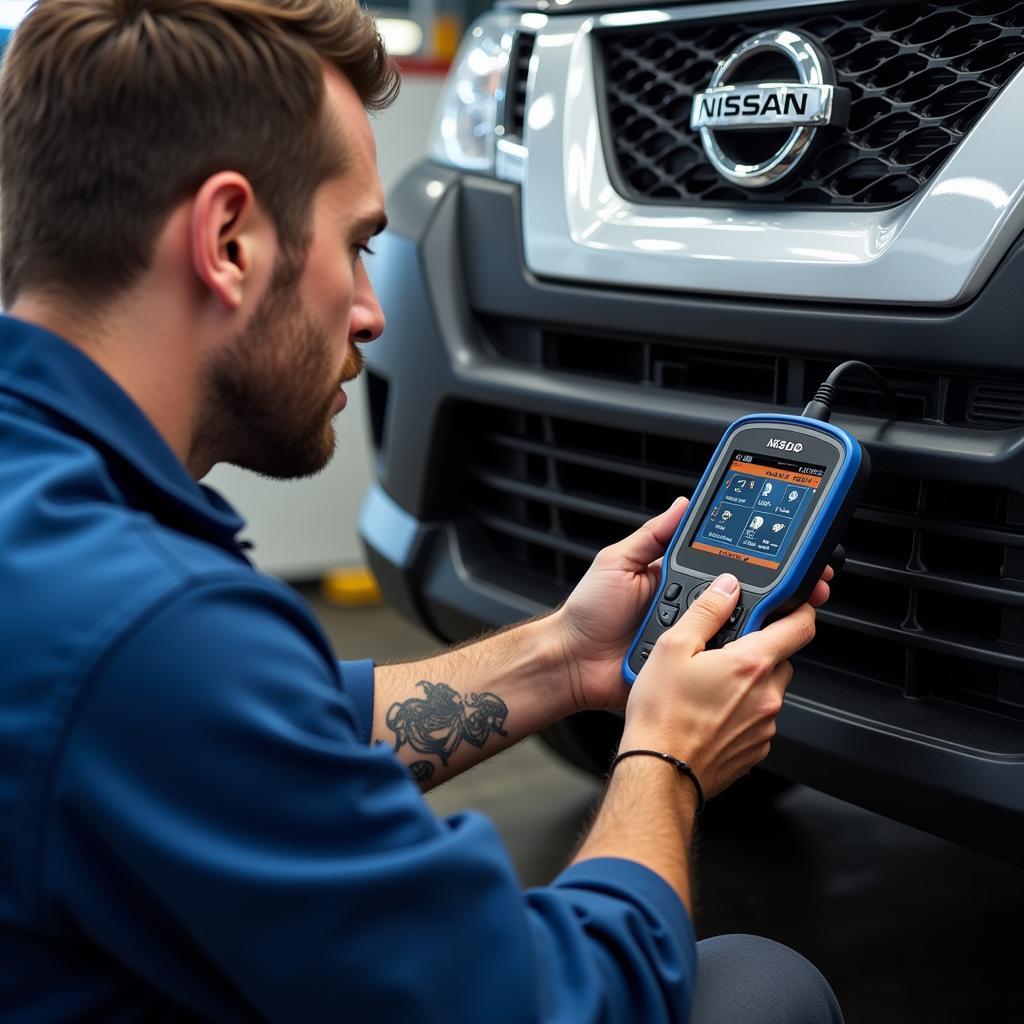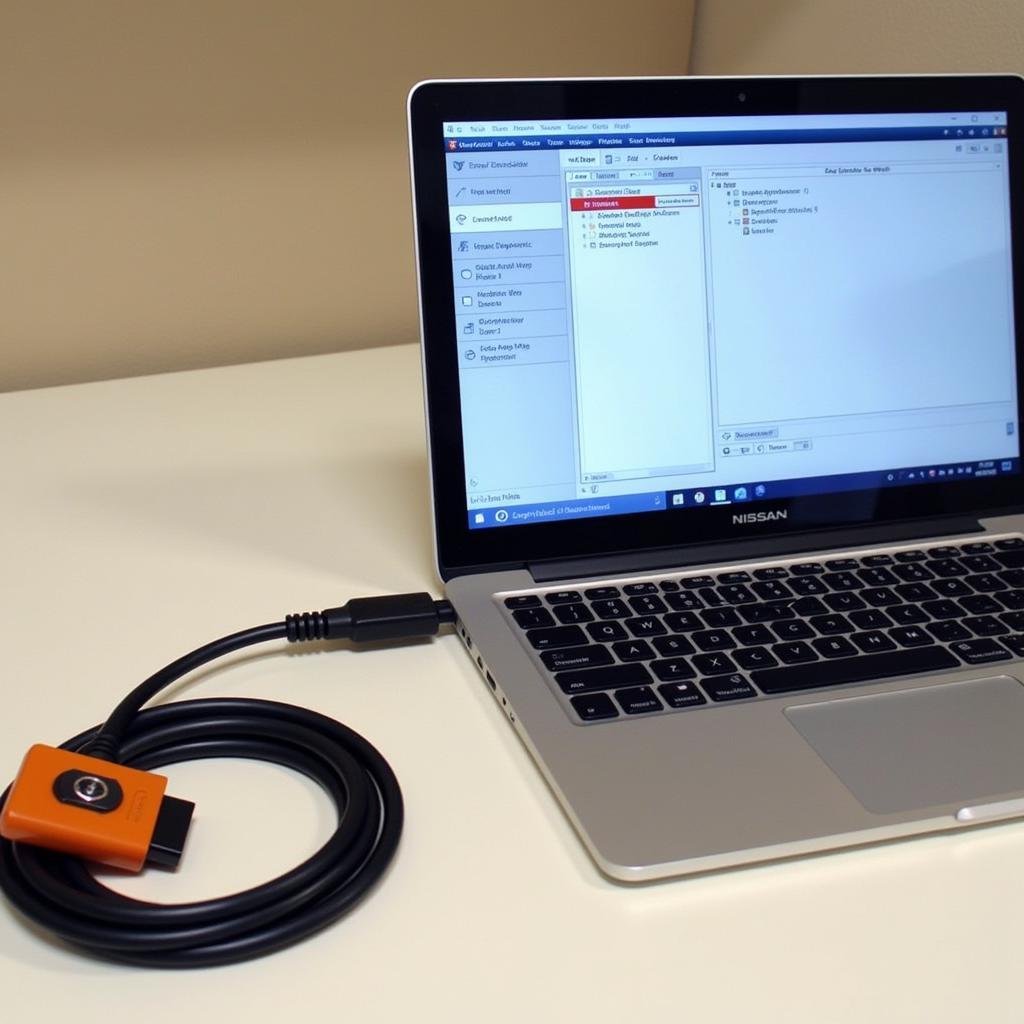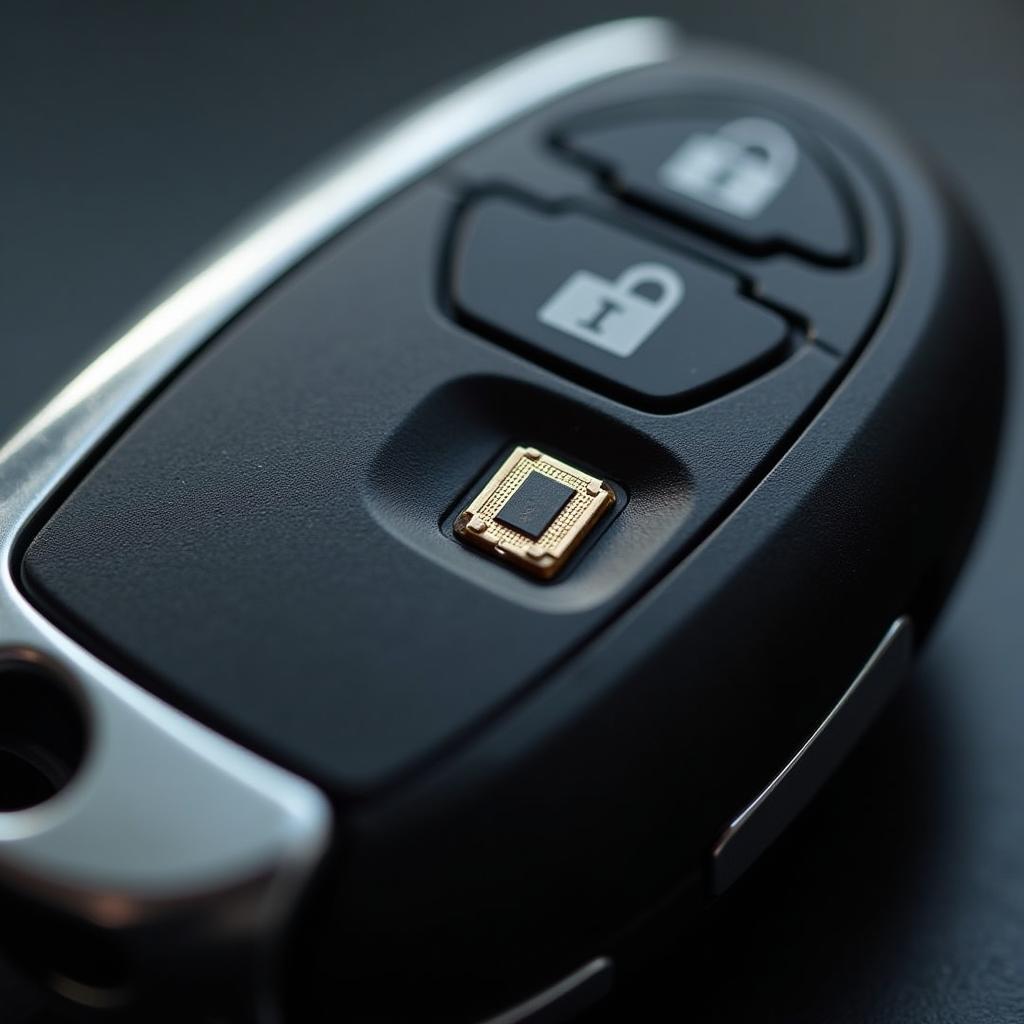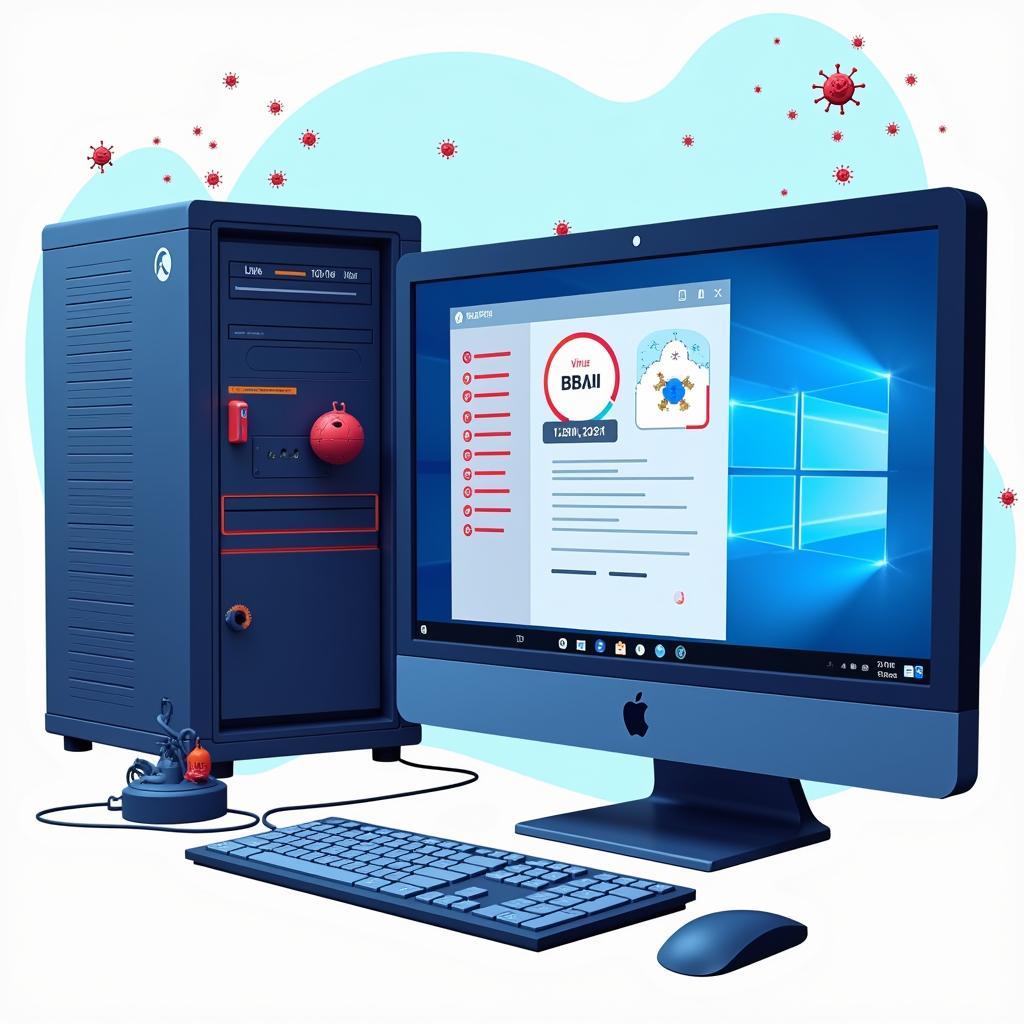Finding the right OBD1 scan tool for your Nissan can feel like navigating a maze. This guide will walk you through everything you need to know about using an OBD1 scan tool on your Nissan, from understanding the basics to troubleshooting common problems. We’ll cover compatibility, usage, and even offer some expert tips to help you get the most out of your diagnostic tools.
Understanding OBD1 in Nissan Vehicles
Before diving into the specifics of OBD1 scan tools, it’s crucial to understand what OBD1 (On-Board Diagnostics 1) is and how it works in Nissan vehicles. Unlike the standardized OBD2 system, OBD1 is manufacturer-specific, meaning Nissan developed its own system. This presents some challenges when finding compatible scan tools. Nissan OBD1 systems typically rely on consult connectors, which vary depending on the model year and region. This means a scan tool that works on a 1995 Nissan Maxima might not work on a 1992 Nissan 240SX.
Why Use an OBD1 Scan Tool on a Nissan?
OBD1 scan tools allow you to communicate with your Nissan’s ECU (Engine Control Unit), retrieving diagnostic trouble codes (DTCs). These codes pinpoint potential issues, saving you time and money on repairs. While simpler than OBD2, OBD1 still provides valuable insights into engine performance, emissions, and other critical systems. Think of it as your car’s way of telling you what’s wrong.
Finding the Right OBD1 Scan Tool for Your Nissan
Choosing the correct OBD1 scan tool for your Nissan can be tricky due to the variations in connectors and protocols. It’s vital to identify your Nissan’s specific system before purchasing a tool. Research online forums, consult your owner’s manual, or contact a Nissan specialist to determine the correct connector type and compatible scan tools. Investing in a quality scan tool will save you headaches down the road.
Key Features to Look For in an OBD1 Scan Tool
When selecting an OBD1 scan tool for your Nissan, consider the following features:
- Compatibility: Ensure the tool explicitly states compatibility with your Nissan’s model year and region.
- Code Reading and Clearing: The tool should be able to read and clear DTCs.
- Live Data: Some tools display live data from sensors, allowing you to monitor engine performance in real-time.
- User-Friendly Interface: A clear and easy-to-navigate interface will simplify the diagnostic process.
Troubleshooting Common Nissan OBD1 Issues
Sometimes, even with the right scan tool, you might encounter issues. Here are some common problems and solutions:
- No Communication: Check the connection between the scan tool and the consult port. Ensure the ignition is on. Try a different consult port if your Nissan has multiple.
- Incorrect Codes: Double-check the compatibility of your scan tool. A tool designed for a different Nissan model might provide inaccurate codes.
- Intermittent Issues: These can be challenging to diagnose. Use the live data feature (if available) to monitor sensor readings while the issue occurs.
 Using a Nissan OBD1 Code Reader
Using a Nissan OBD1 Code Reader
“A good OBD1 scan tool is an essential investment for any Nissan owner. It empowers you to take control of your vehicle’s diagnostics and avoid unnecessary trips to the mechanic,” says Robert Johnson, Senior Automotive Diagnostic Technician at ScanToolUS.
Beyond the Basics: Advanced OBD1 Diagnostics for Nissan
For more advanced diagnostics, consider using a consult interface cable combined with diagnostic software on a laptop. This setup allows access to more detailed information and functionalities, including data logging and sensor adjustments. However, this requires a deeper understanding of Nissan’s OBD1 system.
 Nissan Consult Cable Connected to a Laptop
Nissan Consult Cable Connected to a Laptop
“While OBD1 might seem outdated compared to OBD2, it’s still a powerful tool for understanding your Nissan’s health. Don’t underestimate the value of a reliable OBD1 scan tool,” adds Maria Sanchez, Lead Technician at a specialized Nissan repair shop.
Conclusion
Choosing the right OBD1 scan tool for your Nissan requires careful consideration of compatibility and features. By understanding the nuances of Nissan’s OBD1 system and following the tips in this guide, you can effectively diagnose and troubleshoot issues, saving both time and money. Don’t hesitate to connect with ScanToolUS at +1 (641) 206-8880 or visit our office at 1615 S Laramie Ave, Cicero, IL 60804, USA for further assistance and expert advice on Obd1 Scan Tool Nissan.
 Nissan OBD1 Diagnostic Trouble Codes Displayed on a Scan Tool
Nissan OBD1 Diagnostic Trouble Codes Displayed on a Scan Tool
FAQ
- What is the difference between OBD1 and OBD2 in Nissan vehicles? OBD1 is manufacturer-specific, while OBD2 is a standardized system.
- Where is the consult port located on my Nissan? The location varies depending on the model, but it’s typically under the dashboard or near the steering column.
- Can I use a generic OBD1 scan tool on my Nissan? It’s crucial to use a scan tool specifically designed for Nissan OBD1 systems.
- How do I clear DTCs on my Nissan with an OBD1 scan tool? Most scan tools have a clear codes function. Consult the tool’s manual for specific instructions.
- What if my OBD1 scan tool isn’t communicating with my Nissan? Check the connection, ignition, and try a different consult port if available.
- Are OBD1 scan tools still relevant for older Nissans? Absolutely! They are essential for diagnosing and troubleshooting issues in pre-OBD2 Nissans.
- Where can I find more information about Nissan OBD1 systems? Online forums, Nissan service manuals, and specialized Nissan repair shops are valuable resources.


